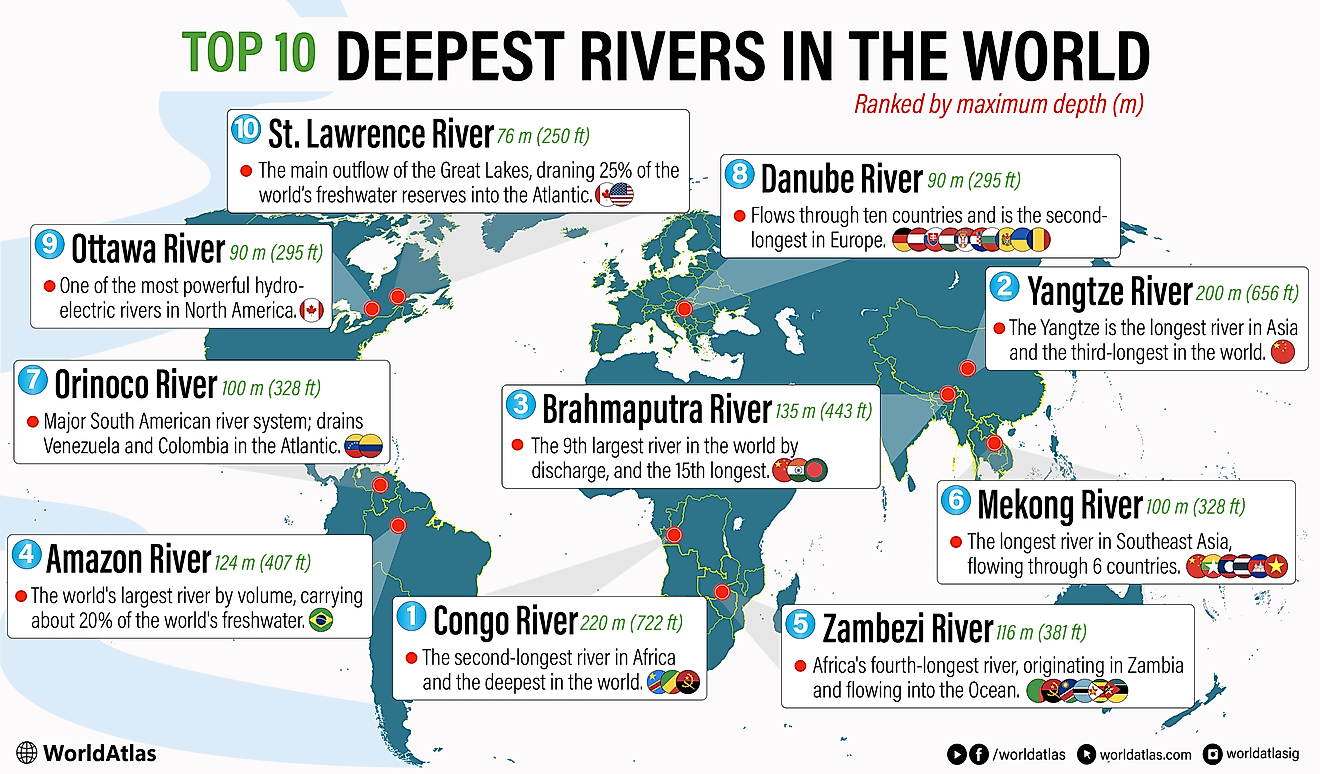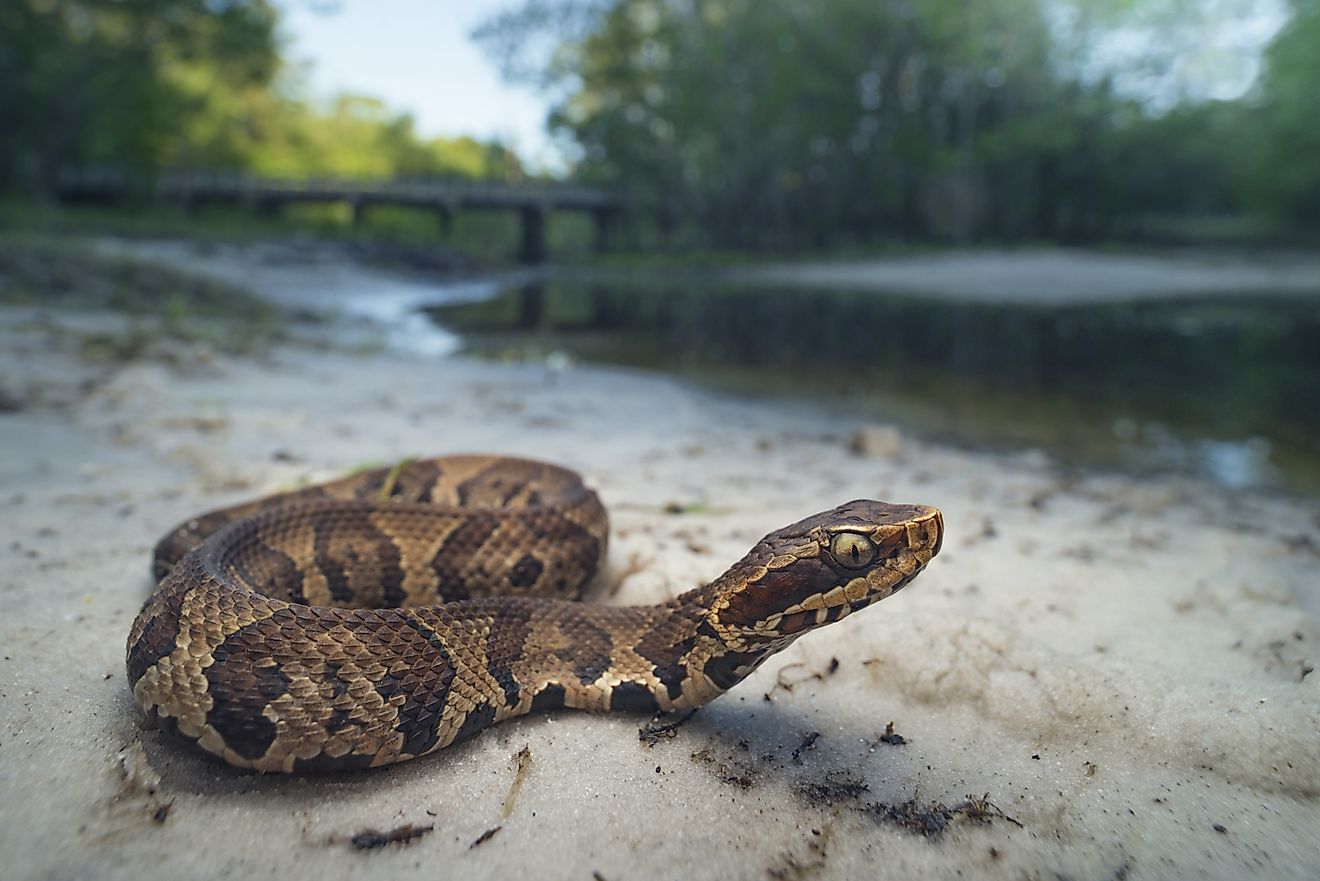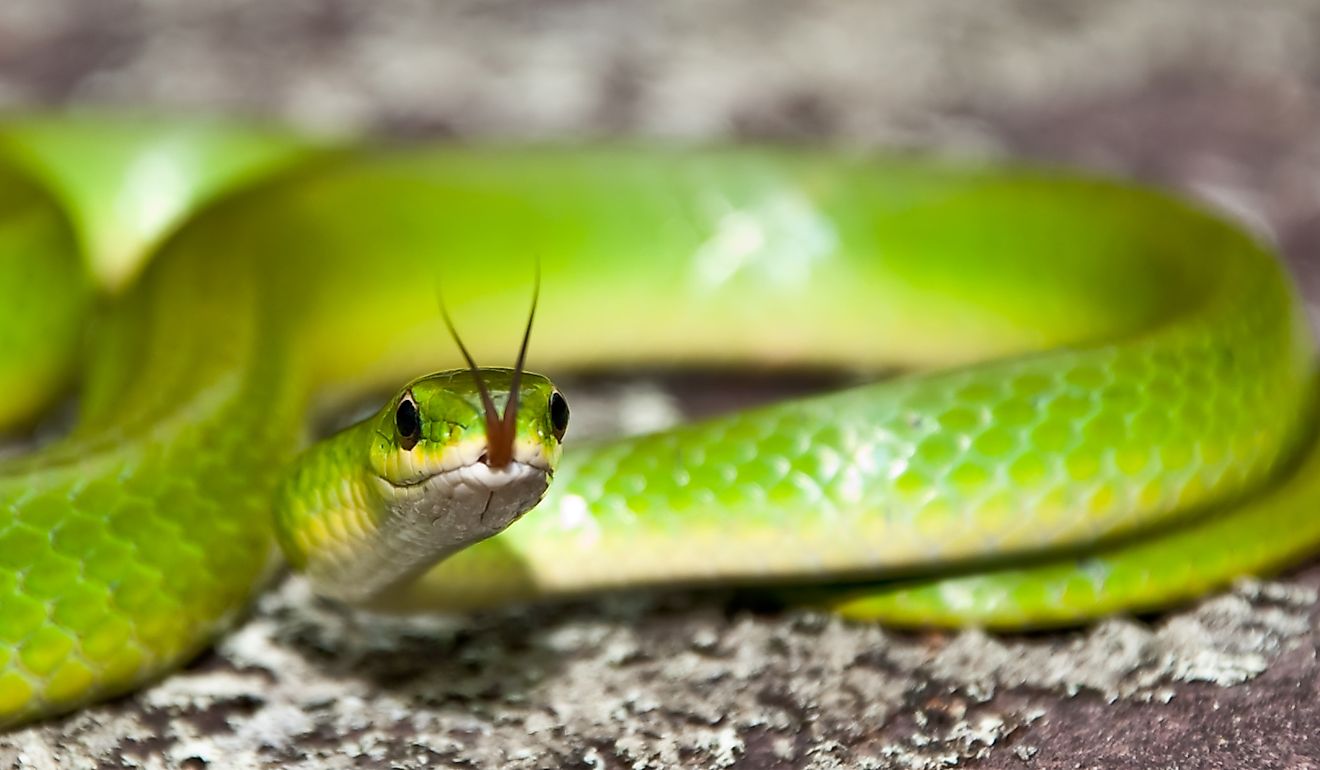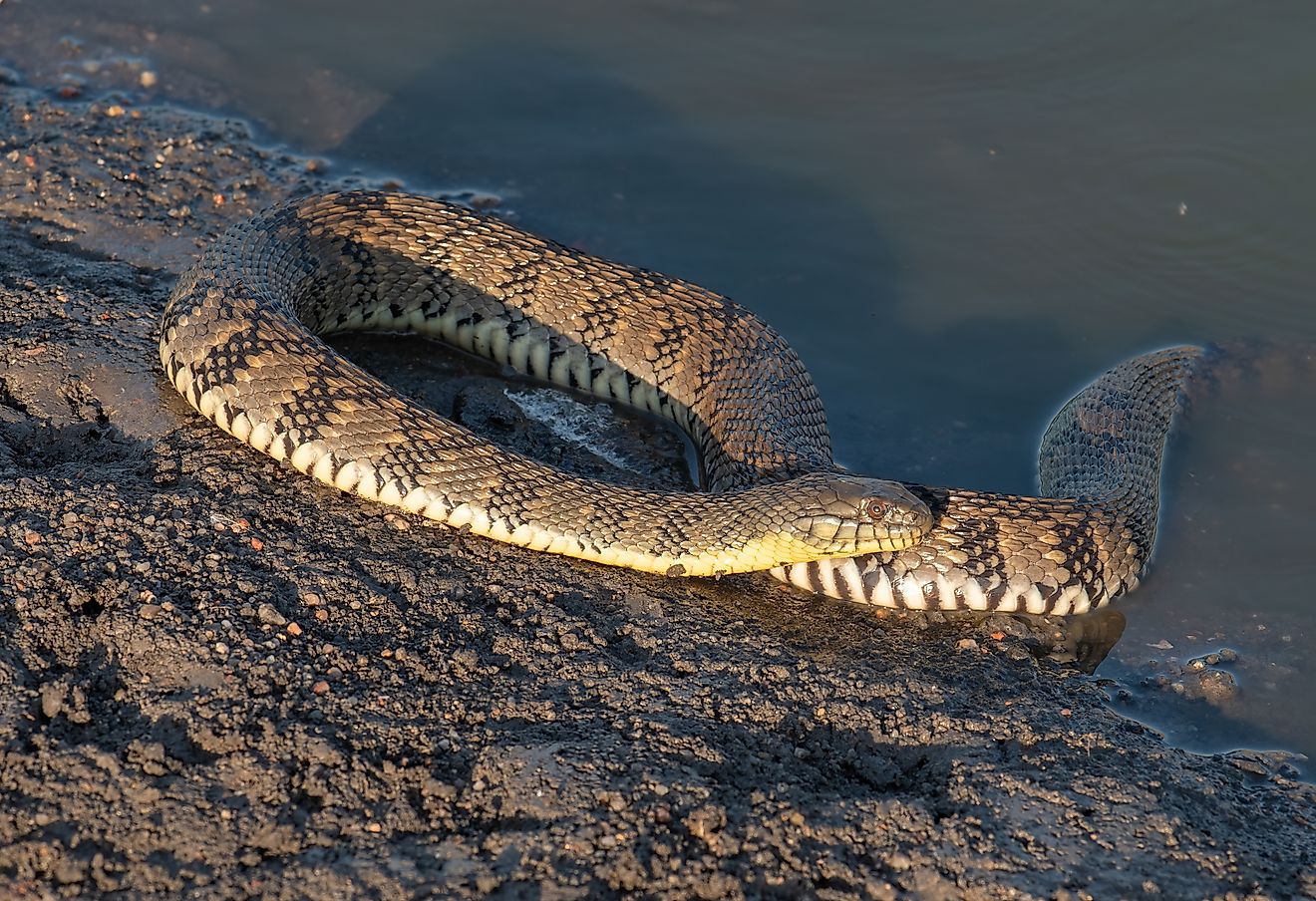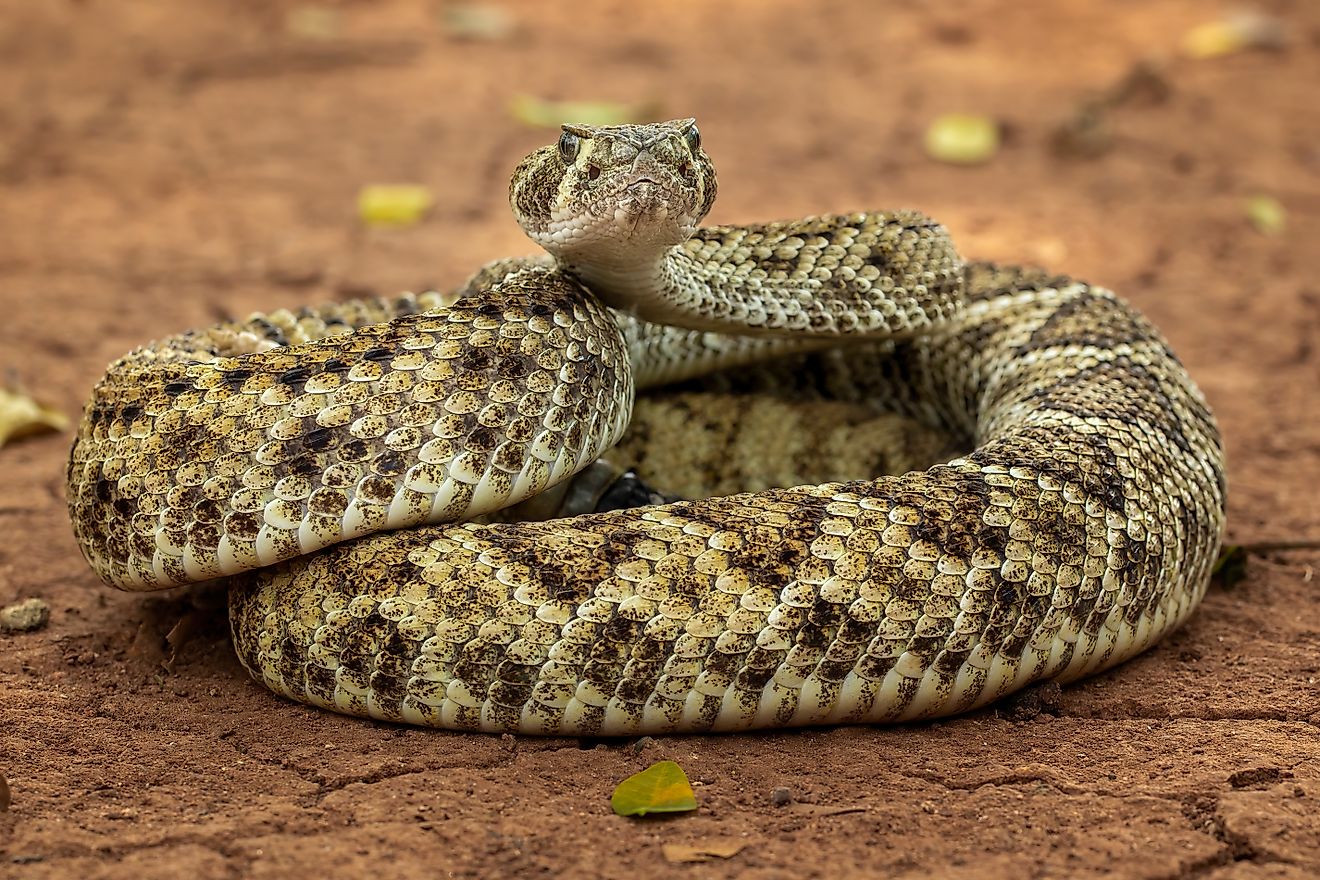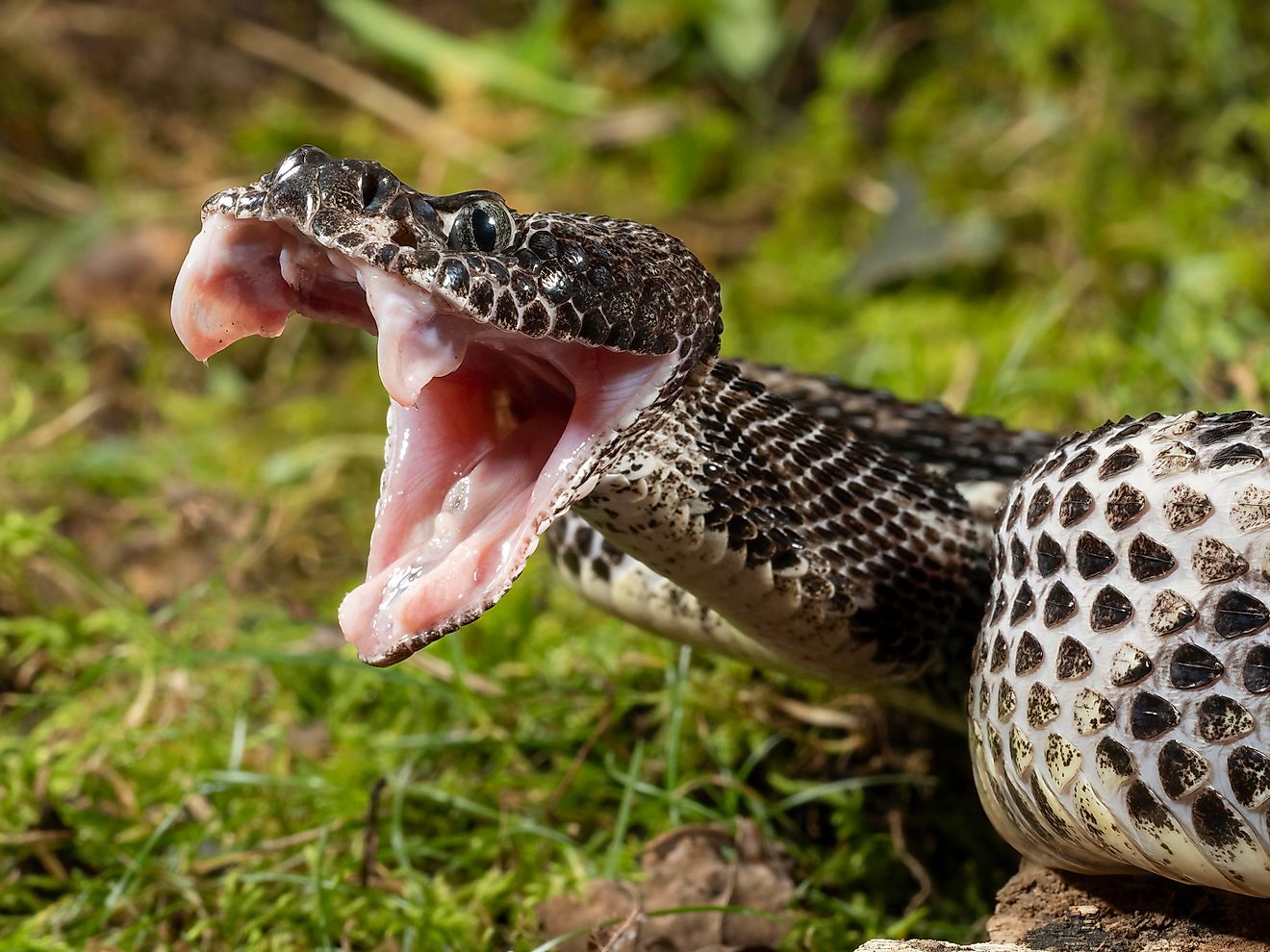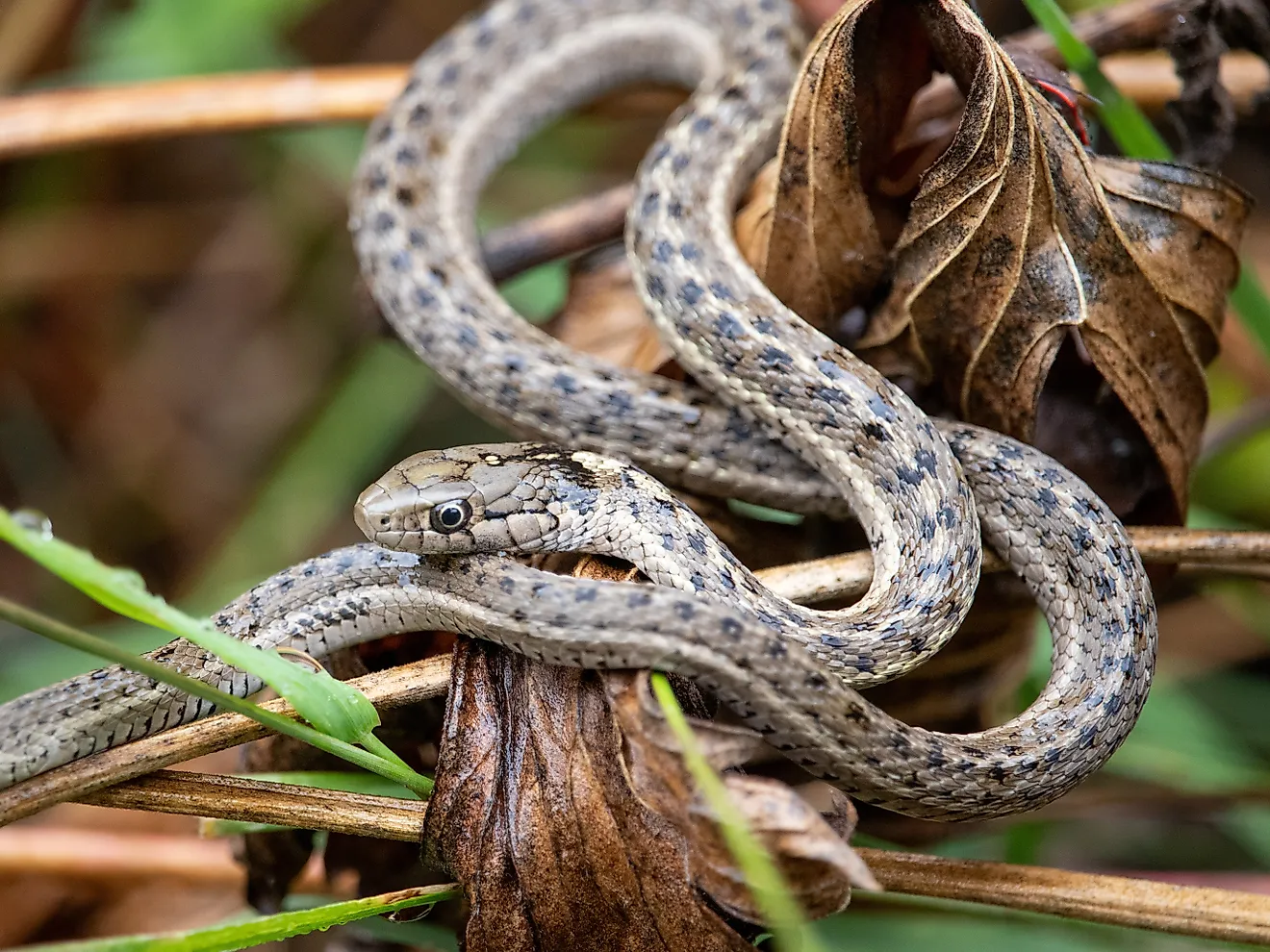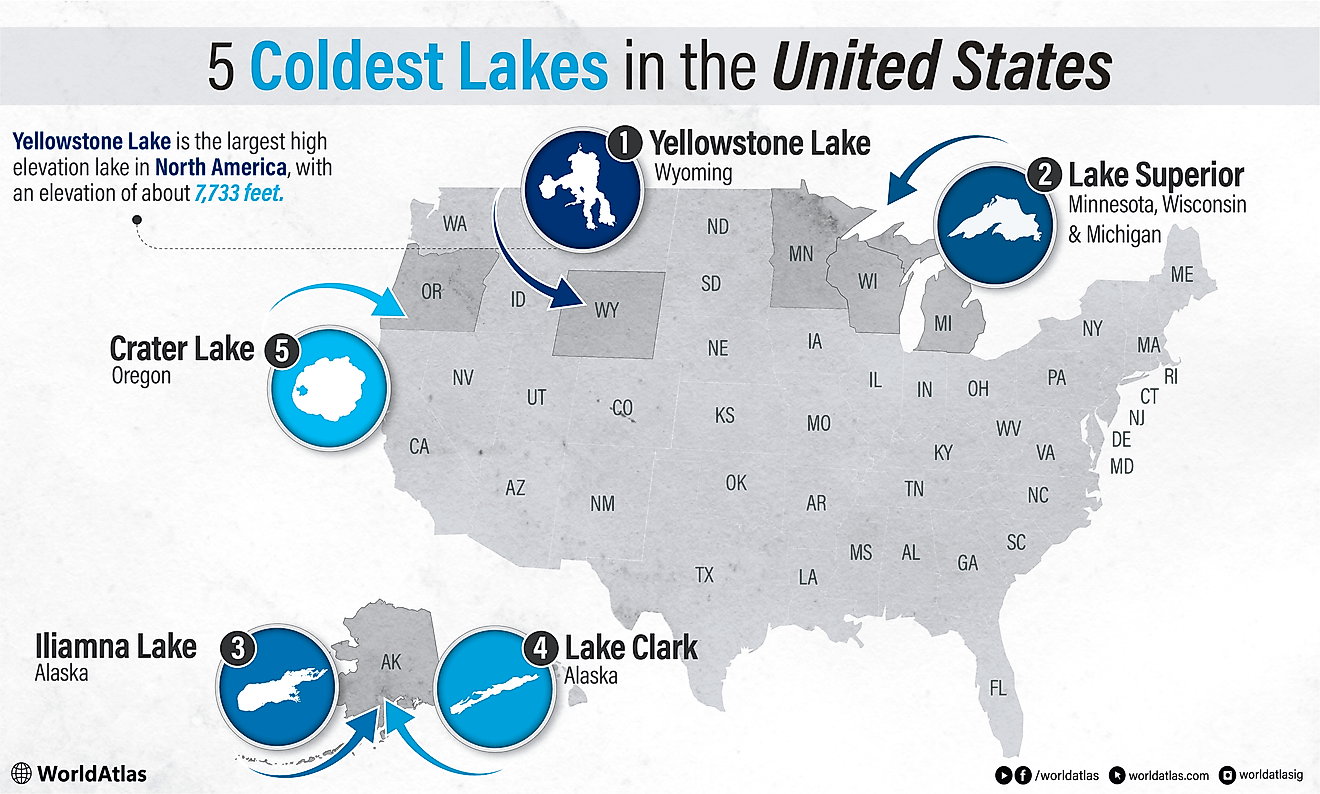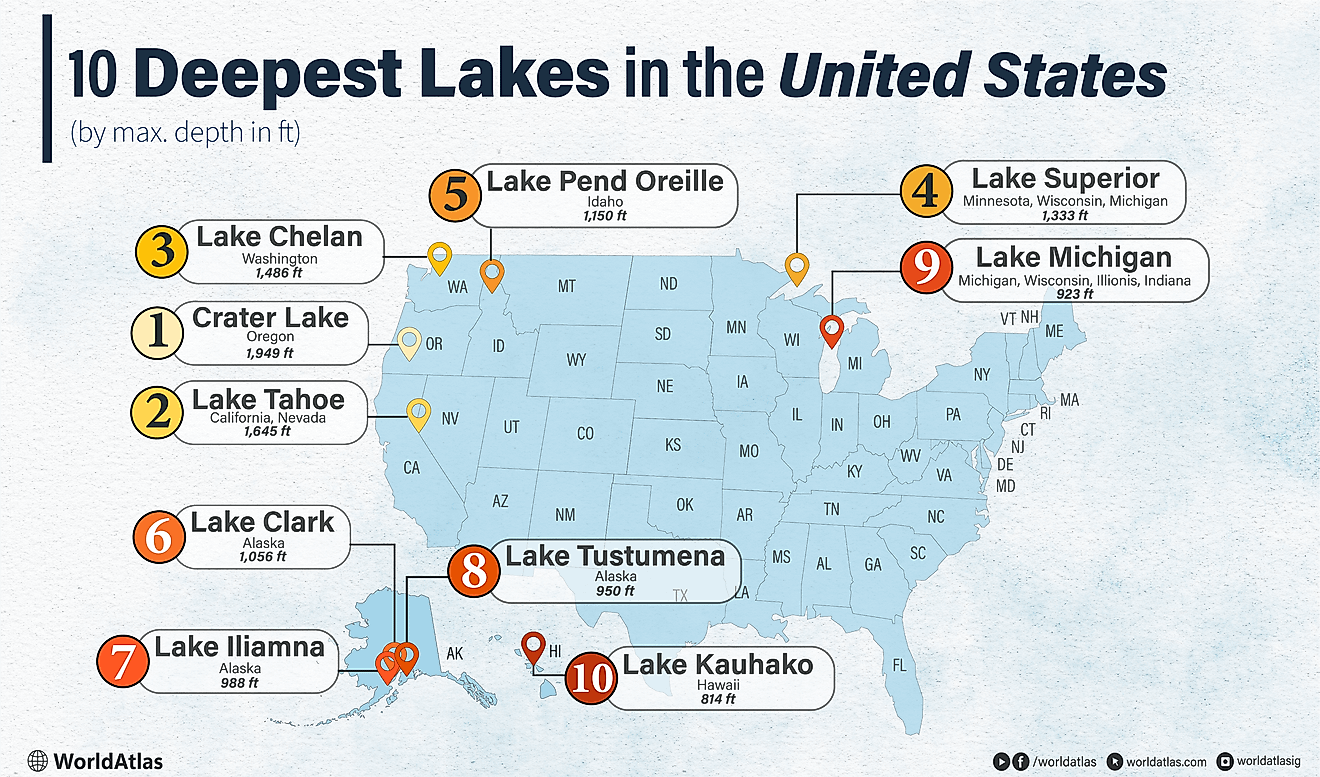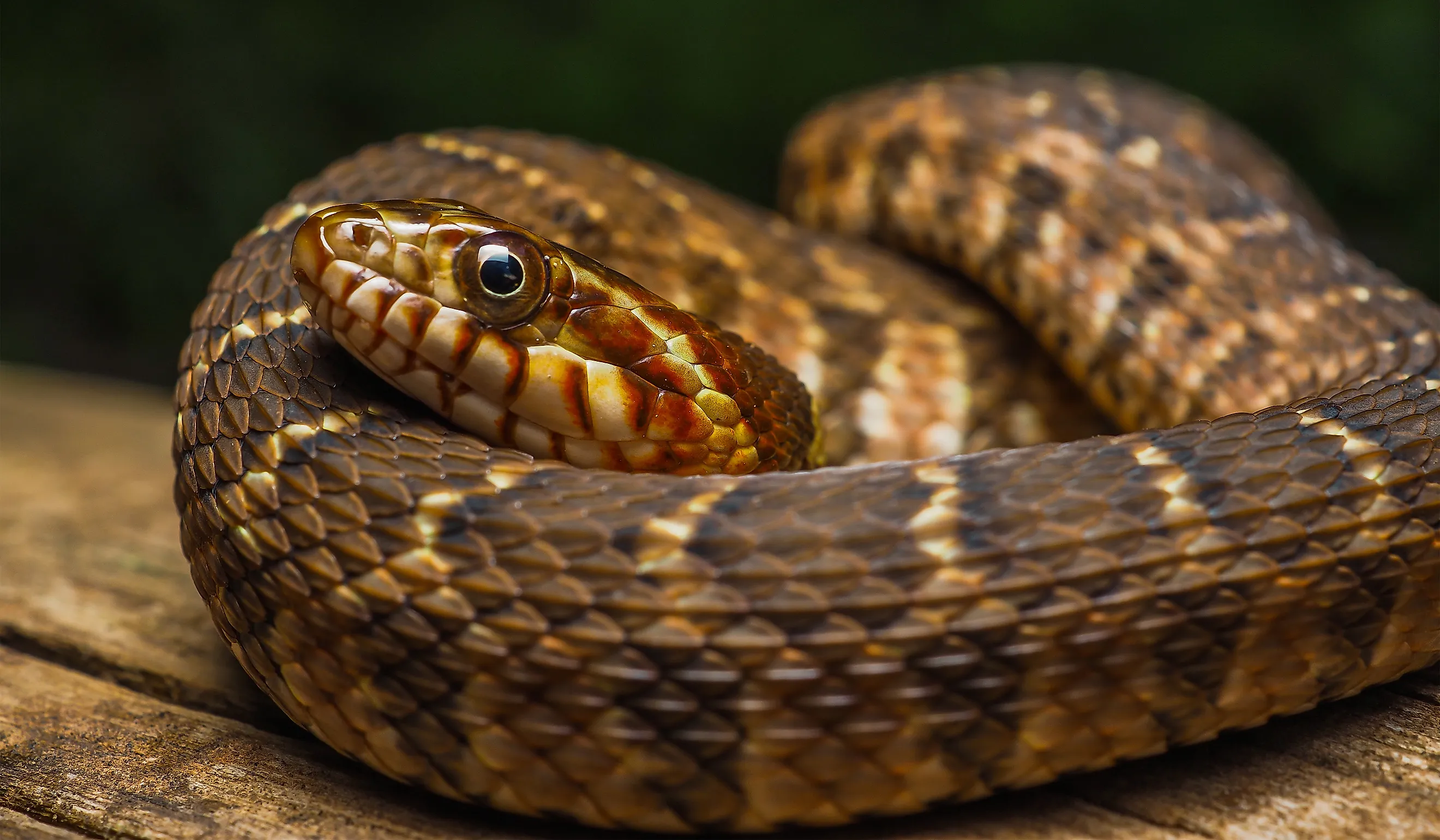
The Most Snake Infested Rivers In Missouri
Home to grassy prairies, the Ozark hills and valleys, lowland swamps, and tree-lined marshes, Missouri is a paradise for snakes. There are 49 species and subspecies of reptiles spread throughout the state’s diverse habitats. Most are harmless, although there are six venomous snakes found within Missouri’s borders, including Cottonmouths and Timber Rattlesnakes. Read on to discover the Missouri rivers that are known for their healthy snake populations, so you can be prepared and stay safe when enjoying a riverside park or recreation area in the Show-Me State.
Current River
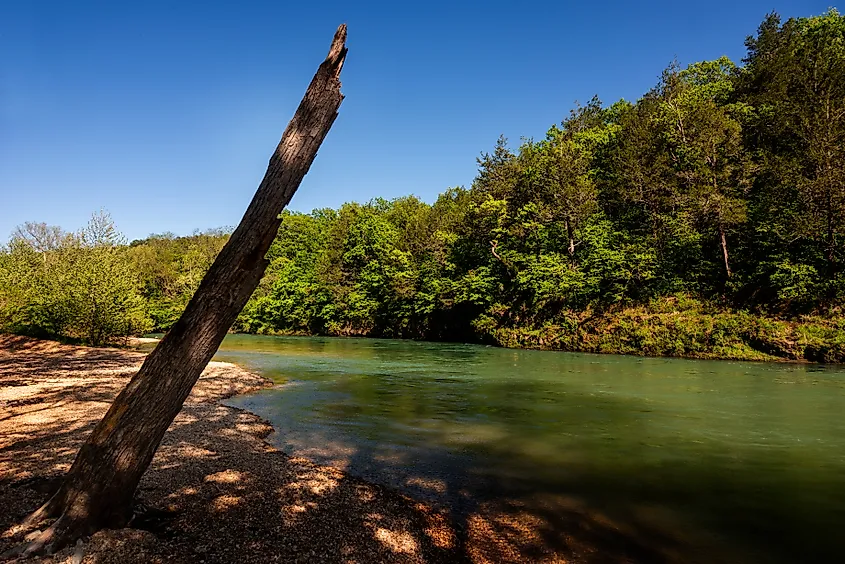
The Current River flows through the Ozarks region and is a popular destination for fishing, boating, and rafting. There are several designated recreation areas along the river, including a designated segment of the Ozark National Scenic Riverway and the Current River State Park.
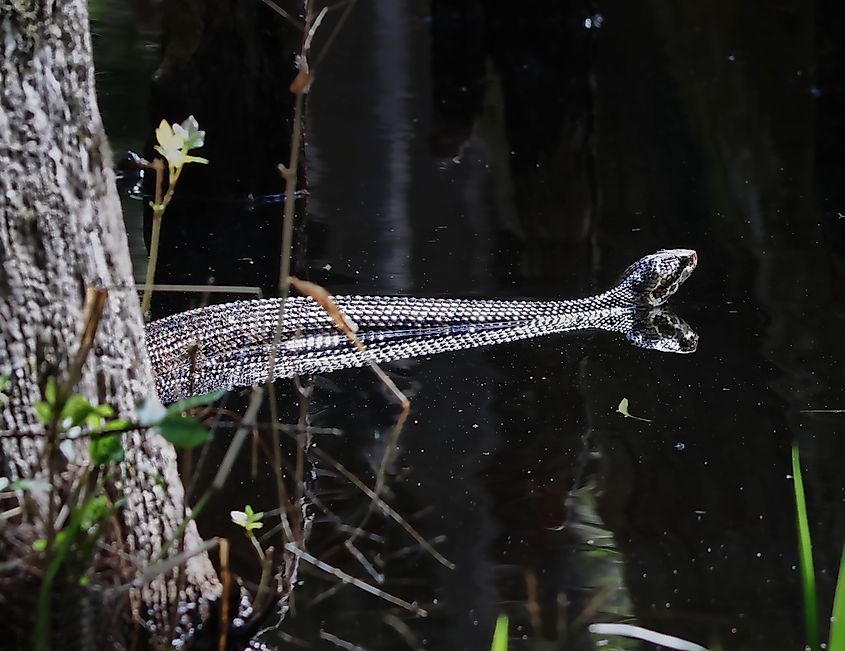
There are around 25 different snake species in the Current River area, including the Cottonmouth, also known as a Water Moccasin. These are semi-aquatic snakes named for their white, puffy mouths that they display in a fearsome strike pose when threatened. Cottonmouths in the Ozarks prefer rocky streams and river slough habitats. While their bite can be fatal, they prefer not to interact with humans and will slither or swim away if they can. Cottonmouths can be identified by their long, slinky, black bodies, which can grow up to 42 inches long.
Black River
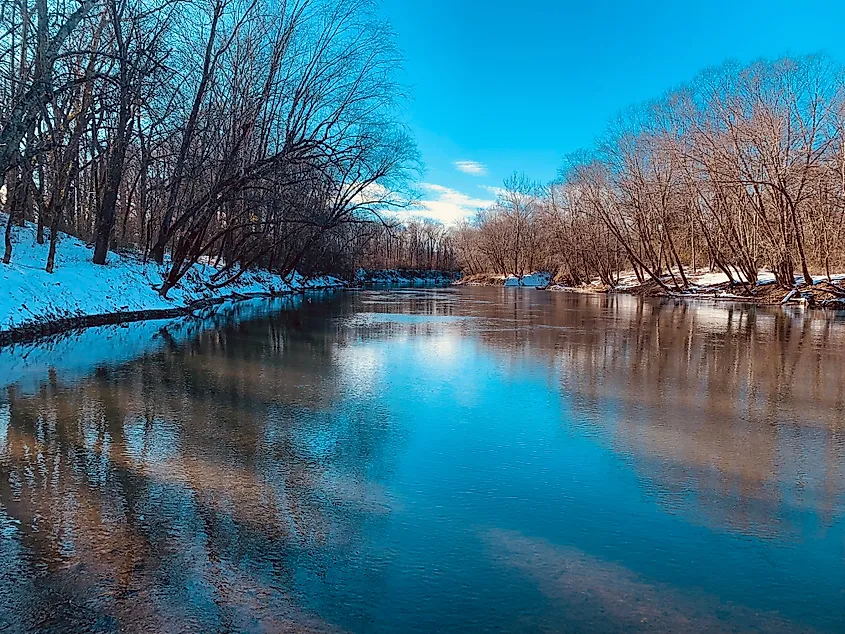
The Black River, in southeastern Missouri, is a 300-mile-long tributary of the White River known as one of the state’s cleanest waterways. The river’s spring-fed, pristine waters make it a favorite of floaters, kayakers, swimmers, and anglers eager to catch its plentiful smallmouth bass, goggle-eye, and catfish.
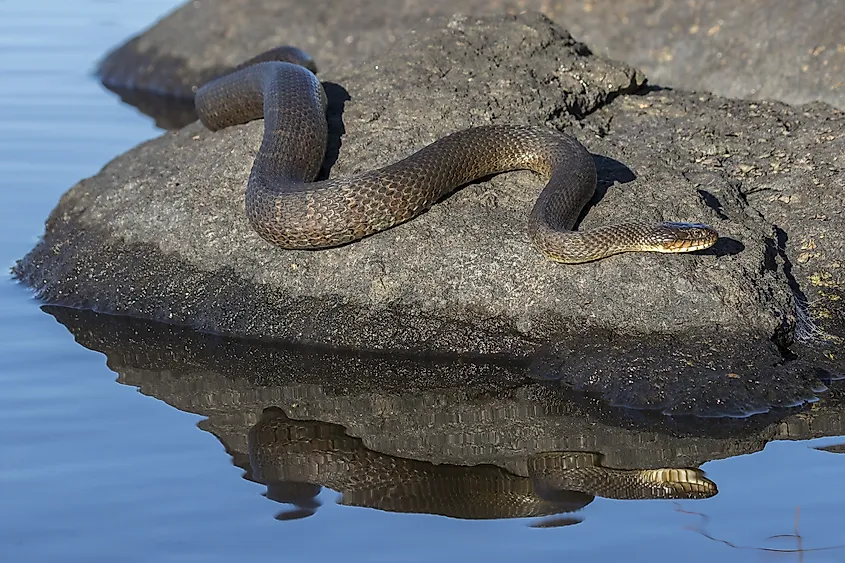
Fish aren’t the only thing in the Black River, however. Northern Watersnakes frequent this area and are often found sunning themselves on logs by the river banks. Gray or brown with dark crossbands and a cream-colored belly, the snake is one of the most common aquatic snakes in the state. They generally grow up to 42 inches long and feed on fish, frogs, toads, and salamanders.
Northern Watersnakes are active from April through to October and become nocturnal during the warm summer months. Resilient and adaptable, they thrive in a number of watery habitats, including creeks, rivers, sloughs, ponds, lakes, and swamps. In winter, they go to ground under logs, in rock crevices, and on levees.
Eleven Point River
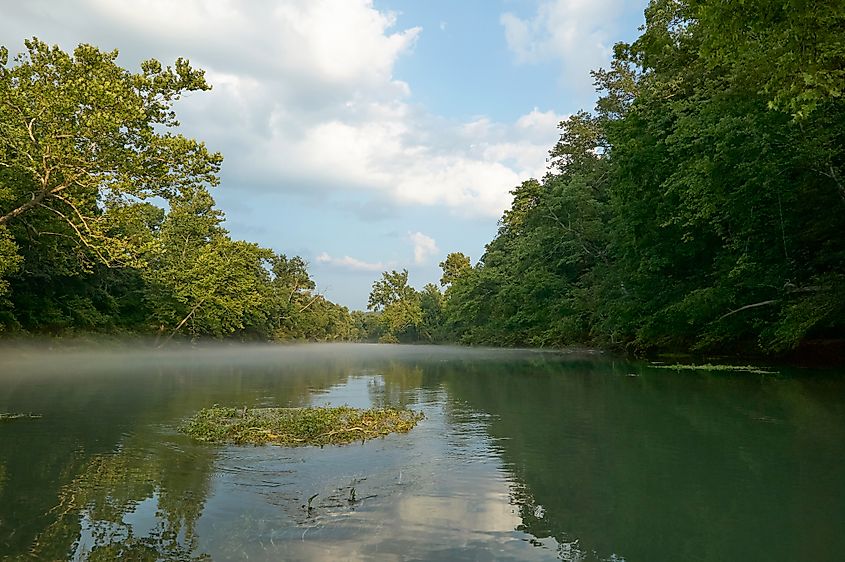
Part of the National Wild and Scenic River System, the Eleven Point River in southern Missouri is an area of outstanding natural beauty and rich ecology.
Well stocked with Black crappie, Chain pickerel, Largemouth bass, Rainbow trout, and Walleye, the river is very popular with anglers. It’s also a beautifully scenic spot for camping, hiking, and kayaking. Recreation areas along the river include Greer Crossing Recreation Area and the Irish Wilderness Area.
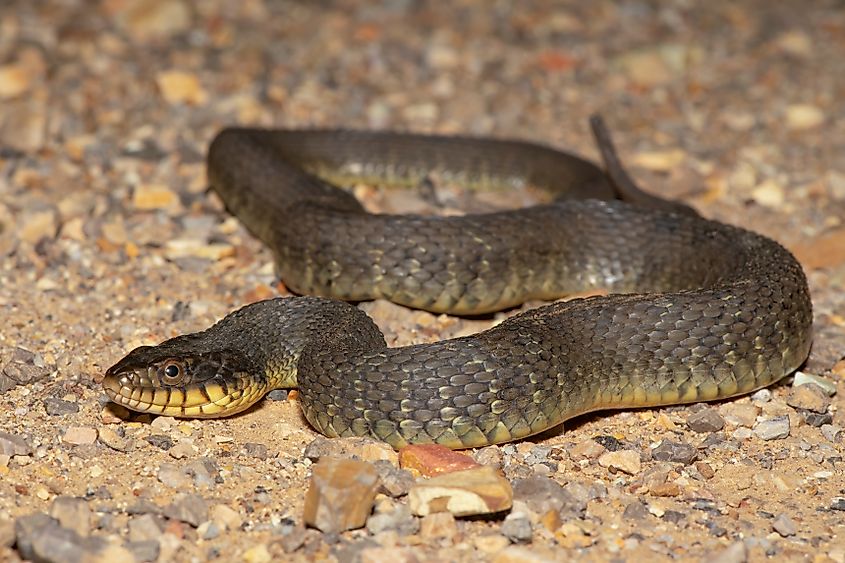
There are five species of watersnake in Missouri, and many are common in the Eleven Point River. Aside from the common Northern Watersnake, you may also see the Plain-bellied Watersnake, a gray or greenish snake with a yellow or orange belly. They are non-venomous and eat crayfish, fish, and frogs.
Gasconade River
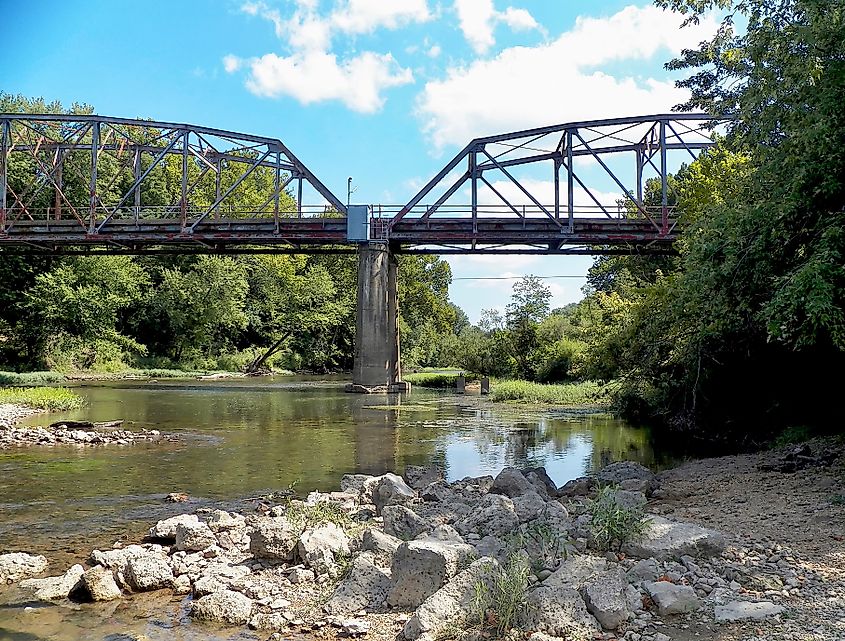
The 280-mile-long Gasconade River flows through central and southern Missouri and is known as one of the most crooked rivers in the world. The twisty, spring-fed waterway covers many different habitats from riverside forests to open grassland. These diverse environments have attracted many reptile species, and snake populations are thriving in the river region.
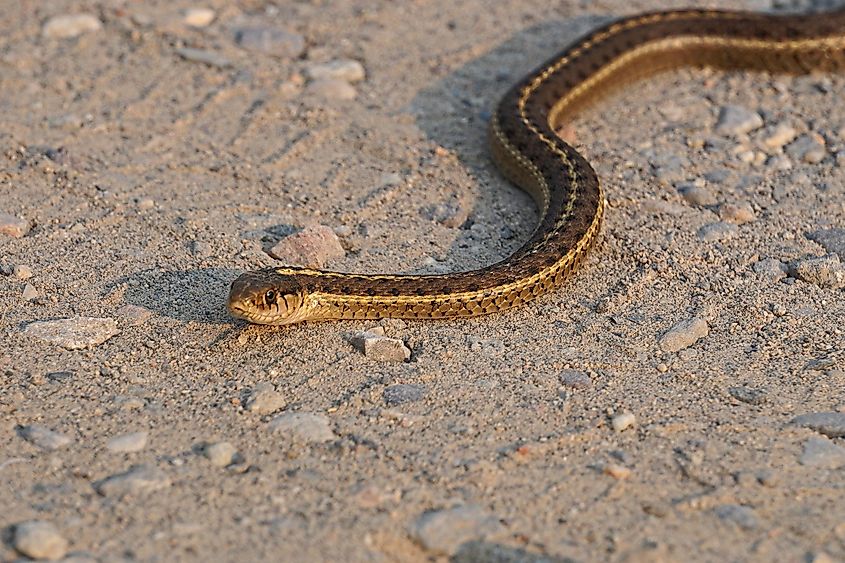
Harmless species such as Northern Watersnakes, Common Gartersnakes, and the Northern Rough Greensnake share the river with their venomous colleagues. These include the Eastern Copperhead, Missouri’s most common venomous snake. The Copperhead is found on rocky hillsides, the edges of forests, and along prairie streams. They typically grow up to 36 inches long and can be identified by their distinctive, hourglass-shaped crossbands. They take their name from the color of their head, which is often a pinkish or orange color. While Copperhead venom is considered fairly mild, medical treatment should still be sought if someone is bitten.
Mississippi River
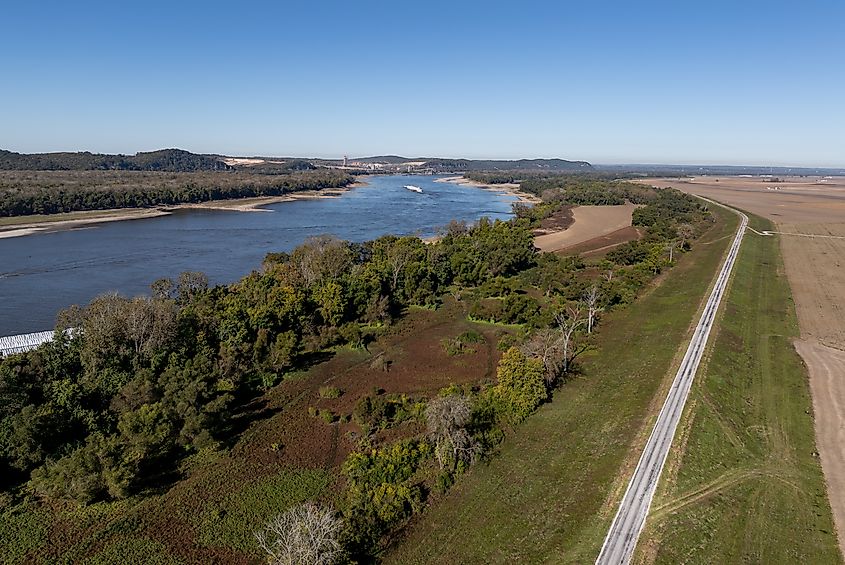
The Mississippi River is the second longest in the United States, meandering through the southeastern part of Missouri on its journey from northern Minnesota to the Gulf of America.
In this stretch, it’s home to several snake species, including the Diamond-backed Watersnake, the largest watersnake in the state, which is common in the Mississippi River floodplain. Growing up to 48 inches long, this is a thick-bodied, dark snake with light, diamond-shaped blotches on its back. They prefer slow-moving rivers, especially where there are wetlands, oxbow lakes, and swamps.
The Mississippi is also home to Missouri’s largest venomous snake, the Timber Rattlesnake. Found statewide, the rattler has dark markings across its body and a rust-colored stripe down its back. They can grow up to 60 inches long. Rattlesnakes like to hang out on the rocky hillsides overlooking the river and, like most snakes, are reclusive by nature. When feeling threatened, it will shake its tail as a defence mechanism. If you hear that rattle, freeze and try to locate the snake. Move away from the area slowly and calmly, giving the snake plenty of space to escape.
Snake Tips and Facts
The antidote to ophidiophobia, also known as fear of snakes, is education. Learning about this fascinating species helps dispel any myths and misconceptions we have about serpents, as well as keeping us (and them) safe during any unexpected encounters. If you’re vacationing in Missouri this year, don’t stay out of the water. Enjoy the Show-Me State’s beautiful rivers without worry by taking a few common-sense precautions.
Much like humans, snakes don’t like being surprised. Always tread firmly on trails so they know you’re coming. Stay on marked paths and be wary of stepping anywhere with limited visibility, such as between rocks, around logs, and under leaf litter. Snakes typically only bite when they feel threatened, so it’s important to give them lots of room. If you’re walking through long grass, consider wearing boots and long trousers to cover up your skin. In Missouri, snakes are dormant in the winter and emerge to begin breeding in the spring. The shoulder seasons of spring and fall are when they are most active, so be especially vigilant if visiting at this time of year.
Missouri’s many riverside recreation areas are some of the highlights of this beautiful state. Don’t miss out on enjoying the stunning Midwest landscapes, stay snake smart, and be mindful that you share the waterways with Missouri’s reptile residents.
